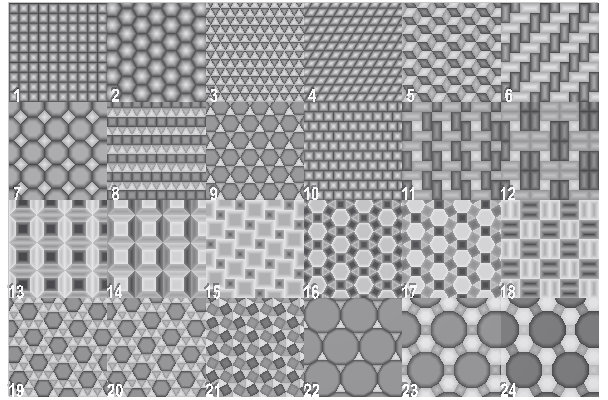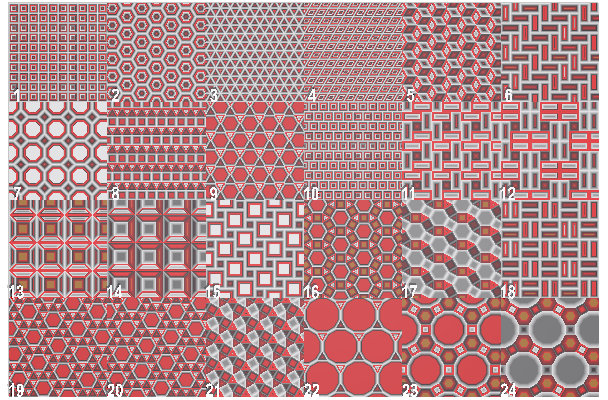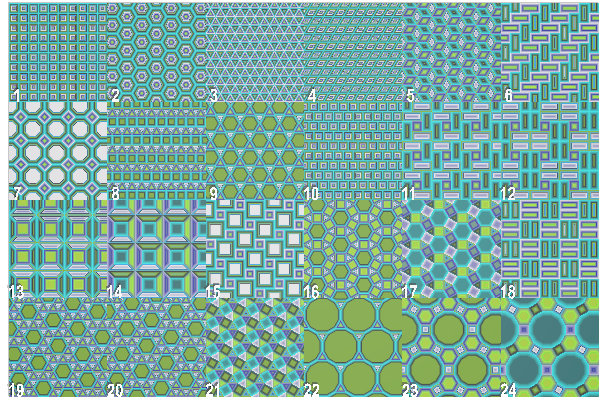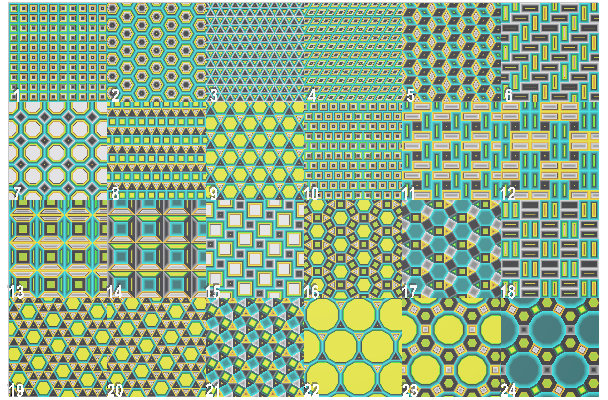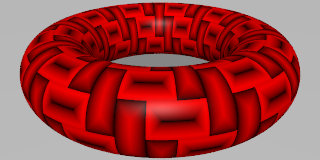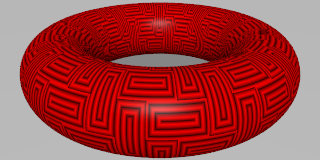Reguläre Musterarten: tiling
- Neu in POV-Ray 3.7
tiling
= Parketierung der xz-Ebene mit 24 klassischen Muster
(Originale Feldlänge bzw. Feldbreite = 1 Einheit)
|
Beispiel:
box{ <0,0,0>,<1,1,1>
texture {
pigment{
tiling 5 // 1~24 Pattern_Number
color_map{
[ 0.0 color rgb<1,1,1>]
[ 1.0 color rgb<0,0,0>]
} // end color_map
scale 0.15
} // end pigment
finish { phong 1}
} // end of texture
} // end of box
|
|
|
|
tiling patterns: 24 verschiedene Kachelungsmuster stehen zur Auswahl.
Beim letzen Beispiel verwendet:
color_map{ [ 0.00 color rgb<0.50, 0.80, 0.00> ]
[ 0.02 color rgb<1.00, 0.80, 0.00> ]
[ 0.05 color rgb<0.00, 0.00, 0.00> ]
[ 0.25 color rgb<0.00, 0.00, 0.00> ]
[ 0.50 color rgb<1.00, 1.00, 1.00> ]
[ 0.52 color rgb<0.00, 0.00, 0.00> ]
[ 0.55 color rgb<1.00, 0.50, 0.00> ]
[ 0.65 color rgb<1.00, 1.00, 0.00> ]
[ 0.67 color rgb<1.00, 1.00, 0.00> ]
[ 0.71 color rgb<0.00, 1.00, 0.00> ]
[ 0.75 color rgb<0.00, 0.00, 0.00> ]
[ 1.00 color rgb<0.00, 1.00, 1.00> ]
} // end color_map |
|
'tiling' und 'frequency' |
Ein interessanter Effekt zusammen mit frequency:
#declare Pigment_1 =
pigment{
tiling 6 // 1~24 Pattern_Number
color_map{
[0.0 color rgb<0,0,0>]
[0.4 color rgb<1,0,0>]
[1.0 color rgb<0,0,0>]
} // end color_map
rotate<-90,0,0>
frequency 5
scale<0.05,0.25,1>*0.5
} // end pigment
//------------------------------------
torus{ 1, 0.333
texture { uv_mapping
pigment{ uv_mapping Pigment_1 }
finish { phong 0.1}
} // end of texture
translate<0.5,0.75,0.5>
} // end of torus -------------------- |
|
uv_mapping auf 'torus' ohne 'frequency'
uv_mapping auf 'torus' mit 'frequency 5'
|
|


